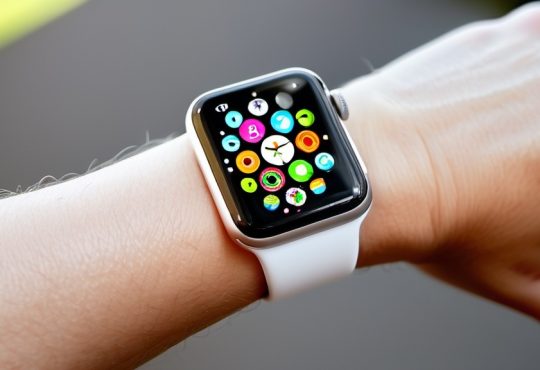Streaming devices have become a central component of home entertainment. With many households switching from traditional cable services to streaming platforms like Netflix, Hulu, Disney+, and Amazon Prime, having the right streaming device can significantly enhance your viewing experience. However, with so many options available, choosing the best device for your TV may seem overwhelming. This guide will help you navigate through the important considerations, ensuring you pick the perfect streaming device based on your needs, preferences, and budget.
Compatibility with Your TV
The first and most crucial aspect of selecting a streaming device is ensuring compatibility with your TV. The device needs to seamlessly integrate with your TV’s hardware and specifications to provide the best performance. Most modern TVs have HDMI ports, which is the standard connection method for streaming devices, but older TVs may lack these ports, requiring an adapter or even limiting your options for compatible devices.
If you have a 4K TV or one that supports HDR (High Dynamic Range), it’s essential to pick a streaming device that can take advantage of those features. Streaming devices like the Amazon Fire TV Stick 4K, Apple TV 4K, or Roku Ultra are designed to stream 4K content and can display HDR formats like Dolby Vision or HDR10. Having a device that aligns with your TV’s specifications means that you will get the best picture quality possible, particularly when watching content designed for higher resolutions.
On the other hand, if you have an older TV that doesn’t support 4K or HDR, investing in a 4K-enabled streaming device might be overkill. In this case, a 1080p device like the Roku Express or Google Chromecast may be a more budget-friendly option that still provides excellent performance.
Additionally, it’s important to ensure that your streaming device works with your TV’s audio setup. Some high-end streaming devices support Dolby Atmos, providing a cinema-like audio experience when paired with compatible sound systems. If you don’t have a soundbar or home theater system, this feature may not be necessary, but it’s worth considering if you plan to upgrade your sound setup in the future.
Preferred Streaming Services
Before settling on a streaming device, verify that it supports your preferred streaming services. Different devices offer access to various streaming platforms, and not all devices support every service. For example, most streaming devices provide access to popular services like Netflix, Hulu, and Disney+, but some may not support niche platforms or lesser-known apps that you regularly use.
If you subscribe to multiple streaming services, consider whether the device allows you to easily access all of them in one place. The Apple TV is known for its comprehensive app library and allows users to subscribe to additional channels directly through the Apple TV app. The Roku platform also offers thousands of channels and apps, giving you plenty of options for both mainstream and lesser-known content providers.
For Amazon Prime Video users, an Amazon Fire TV Stick may be the best choice since it integrates Amazon’s ecosystem seamlessly. The same applies to Google Chromecast, which pairs well with YouTube and Google Play Movies, making it a smart option if you frequently purchase or rent content from Google.
Additionally, keep in mind exclusivity. Some streaming devices offer exclusive apps or content that may be of interest. For instance, the NVIDIA Shield TV offers robust support for Google Stadia, a game streaming service, while the Apple TV offers tight integration with Apple’s gaming service, Apple Arcade.
User Interface and Navigation
Another key factor when selecting a streaming device is the user interface (UI). A good user interface can enhance your viewing experience, making it easy to browse through apps, discover new content, and quickly find what you’re looking for.
Some devices are known for their intuitive and easy-to-navigate UIs. For example, the Roku interface is often praised for its simplicity and clean layout, which is ideal for users who want an uncomplicated viewing experience. Roku organizes your apps in a grid-like format, allowing you to easily select what you want to watch without navigating through complicated menus.
The Amazon Fire TV Stick and Google Chromecast provide more visually appealing interfaces but are more focused on promoting content. While this can sometimes make it easier to discover new shows or movies, it may feel cluttered if you’re simply looking to get straight to a specific app or channel.
Voice controls can also be a valuable addition to streaming navigation. Devices like the Amazon Fire TV Stick feature Alexa integration, allowing you to control the device using voice commands. Similarly, Apple TV supports Siri, and many Roku remotes have built-in voice search functionality. Voice control allows for hands-free searching, skipping, and volume control, which is particularly helpful if you have a smart assistant ecosystem already in place.
Streaming Quality
Streaming devices differ in the level of streaming quality they provide, especially when it comes to resolution and high-definition formats. If you have a 4K UHD TV, it’s important to select a streaming device that supports 4K streaming. Devices like the Roku Ultra, Amazon Fire TV Stick 4K, Apple TV 4K, and NVIDIA Shield TV are excellent options for those wanting high-definition streaming. They also support formats like HDR10, Dolby Vision, and Dolby Atmos for enhanced video and audio quality.
If your TV only supports 1080p resolution, you won’t need a 4K streaming device. Lower-end models like the Roku Express or Google Chromecast provide excellent streaming experiences for Full HD TVs without the added cost of 4K capabilities.
In addition to resolution, it’s essential to consider the frame rate of the streaming device. Devices that support a higher frame rate, such as 60 frames per second (fps), will provide smoother motion, which is especially beneficial for watching sports, action-packed movies, or gaming content.
Remote Control Features
A well-designed remote control can make or break your streaming experience. Streaming devices vary significantly in terms of remote design, so it’s worth considering how much control and functionality you want directly from your remote.
For example, the Roku remote is widely appreciated for its simplicity. It features just a few buttons for basic controls like play, pause, volume, and a dedicated Netflix button for quick access. Some Roku remotes also have private listening modes, where you can plug headphones into the remote for personal listening without disturbing others.
The Amazon Fire TV remote includes built-in voice control via Alexa, which allows users to control not just the TV but also other smart devices like lights and thermostats. The Apple TV remote is touch-sensitive and provides a sleek design, though some users find it less intuitive than other remotes.
If you’re a fan of gaming, devices like the NVIDIA Shield TV come with a more advanced remote and the option to pair a gaming controller, making it ideal for both streaming and playing games.
Casting and Smart Home Integration
In today’s connected world, many streaming devices offer the ability to cast content from your phone or tablet directly to your TV. Devices like Google Chromecast are designed specifically for casting, allowing you to control the streaming experience from your mobile device. However, other devices like the Roku and Amazon Fire TV also offer casting capabilities, providing greater flexibility in how you consume media.
If you’re deeply invested in a smart home ecosystem, consider how well the streaming device integrates with your setup. For example, if you have an Amazon Alexa or Google Assistant-based smart home, choosing a device like the Amazon Fire TV Stick or Google Chromecast will provide seamless integration. You can control your streaming device with your voice assistant and even use it to interact with other smart home devices like lights, thermostats, and security cameras.
Some streaming devices also feature AirPlay, making it easier for Apple users to mirror content from their iPhones, iPads, or MacBooks to the TV. Similarly, Google Cast is available for Android users, providing effortless content casting across devices.
Pricing and Hidden Costs
When choosing a streaming device, it’s important to consider not just the upfront cost of the device, but any additional expenses that might be associated with it. While many streaming devices are relatively affordable—ranging from around $30 to $150—higher-end models may come with more features and better performance.
For example, the Roku Streaming Stick and Amazon Fire TV Stick are budget-friendly options that provide excellent streaming quality and app compatibility. On the other end of the spectrum, the Apple TV 4K and NVIDIA Shield TV are more expensive but offer premium features like gaming support, advanced 4K streaming, and integration with broader smart home ecosystems.
In addition to the device cost, factor in any subscriptions you’ll need. Many streaming devices offer free channels and apps, but to access popular services like Netflix, Disney+, or HBO Max, you’ll need to pay for a subscription. Some devices also offer premium content services or apps that come with additional fees, so make sure to account for these potential costs in your budget.
Also, consider whether the device will require any additional accessories, such as HDMI cables, Ethernet adapters, or sound system components. For example, while most devices offer Wi-Fi connectivity, some users may prefer the stability of a wired Ethernet connection, which may require purchasing a separate adapter
Picking the best streaming device for your TV involves balancing compatibility, preferred streaming services, user interface, streaming quality, and additional features like casting and smart home integration. By considering your TV’s specifications, the streaming platforms you use, and your overall entertainment preferences, you can choose the right device that fits your needs and provides the best value for your money. Whether you’re looking for a simple budget-friendly option or a high-end device with premium features, this guide will help you make an informed decision to enhance your streaming experience.





